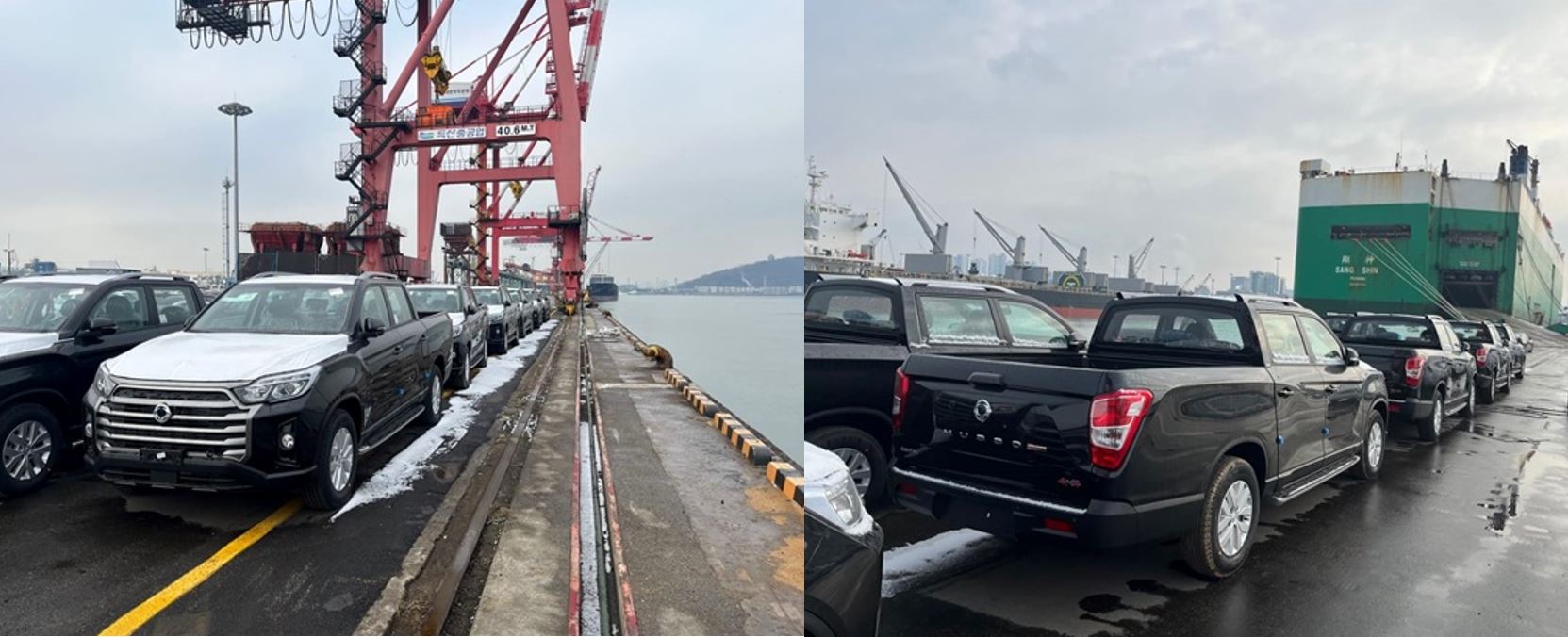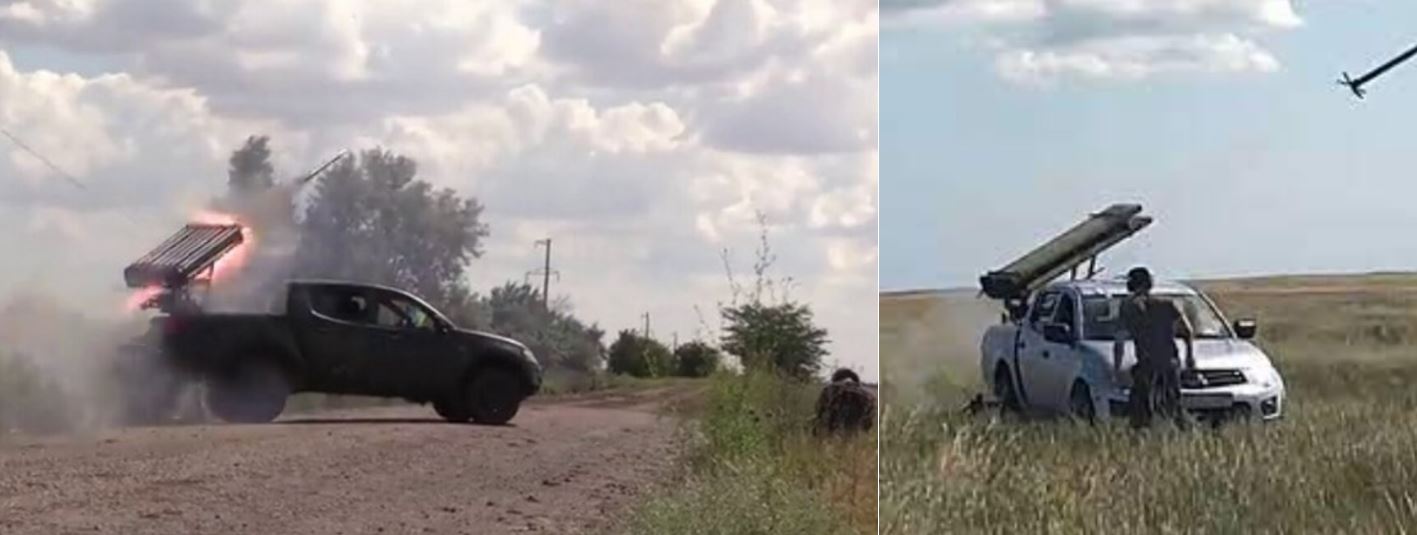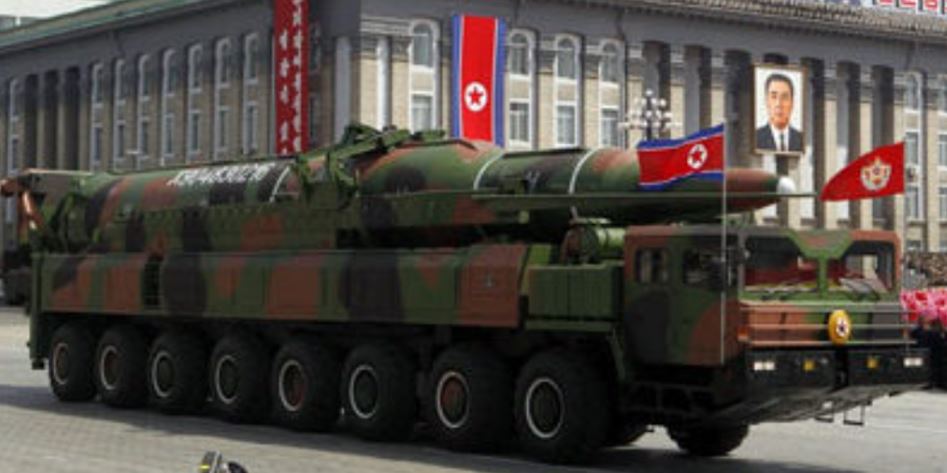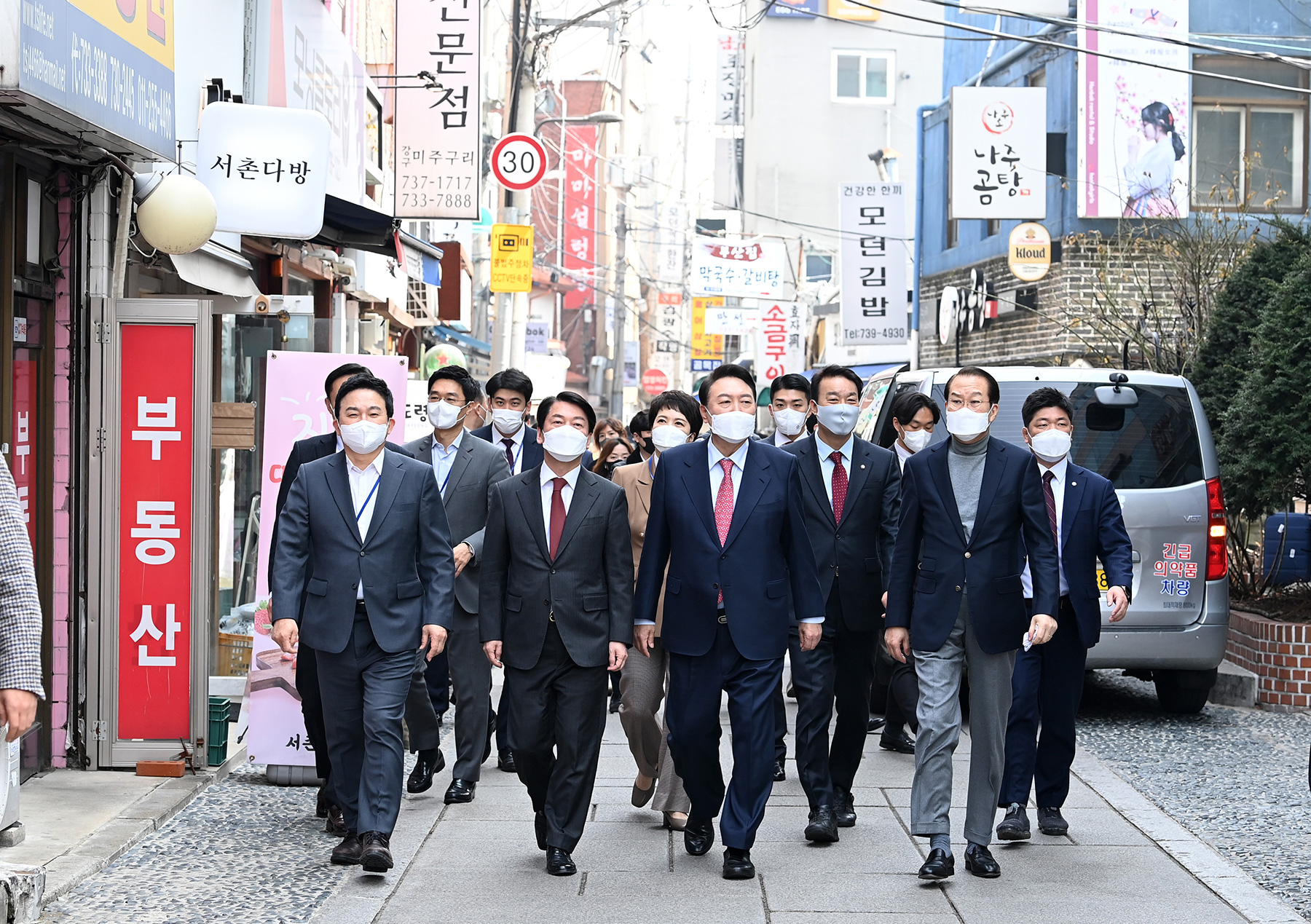During a meeting of the Valdai International Discussion Club on October 27, 2022, Russian President Vladimir Putin warned about the risk of a deteriorating Russo-Korean relationship, given that Seoul was supplying arms and ammunition to Ukraine. The Russian leader posed a logical question: “How would the Republic of Korea feel if we resumed cooperation with North Korea in this area?”
In response, Korean President Yoon Seok-yeol pointed to his solidarity with the international community in providing “peaceful, humanitarian” support to Ukraine. “We have not provided any lethal weapons, but this is a matter of our sovereignty anyway,” he said.
The plan of involving Seoul in the Ukrainian conflict is simple: NATO member states have so far been apprehensive of direct confrontation with Russia through prospectively supplying certain Western weaponry to Kiev, including heavy tanks and military aircraft. Therefore, the Republic of Korea, not a NATO member state, has been chosen as a “backup option.” The deal was apparently stricken during the NATO summit in Madrid in June 2022, with Korean President Yoon Seok Yeol participating. While refusing to supply combat equipment and weapons to Kiev directly and free of charge, South Korea can still do so indirectly, through third parties, selling weapons to those countries that are most actively sending their armaments to Ukraine.
Overall, earlier assurances from Seoul that the situation in Ukraine would not have a negative impact on denuclearization of the Korean Peninsula have not materialized. As a result of serious pressure from Washington, the Republic of Korea has been involved in a concerted Western effort to impose unprecedented and mounting sanctions on Russia amid its special military operation in Ukraine. Simultaneously with the election of the right-wing conservative Yoon Seok-yol as president in March 2022, large-scale U.S.-South Korean military exercises involving an aircraft carrier group, strategic bombers, and mock strikes against North Korean ballistic missile installations were resumed in the Korean peninsula.
For a beautiful word to be heard, it must first be uttered.
— Korean proverb
During a meeting of the Valdai International Discussion Club on October 27, 2022, Russian President Vladimir Putin warned about the risk of a deteriorating Russo-Korean relationship, given that Seoul was supplying arms and ammunition to Ukraine. The Russian leader posed a logical question: “How would the Republic of Korea feel if we resumed cooperation with North Korea in this area?”
In response, Korean President Yoon Seok-yeol pointed to his solidarity with the international community in providing “peaceful, humanitarian” support to Ukraine. “We have not provided any lethal weapons, but this is a matter of our sovereignty anyway,” he said.
Given a very high level of the controversy, we need to understand the origins of such discussions as well as possible consequences, whether for Russian-South Korean relations, for the situation on the Korean Peninsula or for developments in Northeast Asia as such.
Korea’s dangerous gambit
After the start of Russia’s special military operation in Ukraine, Seoul—coming under severe pressure from Washington—adopted a series of sanctions packages against Moscow, resulting in the Republic of Korea designated as an unfriendly state of the Russian Federation in Russian Government Directive No. 430-r, dated March 5, 2022.
In July 2022, the media reported upcoming contracts for the delivery of large batches of South Korean weapons and ammunition to Canada and Poland, which are in the forefront of NATO’s escalation of the conflict in Ukraine. The range and unprecedented volume of South Korean military products supplied to these states indicates that they may soon be added to the Ukrainian arsenals.
In case of Canada, this is about 100 thousand 155-mm artillery rounds. South Korea and Poland had agreed on supplying 980 K2 Black Panther tanks (manufactured by Hyundai Rotem) and their subsequent production (see Fig. 1), 648 pieces of 155 mm K9A1 Thunder self-propelled howitzers (Hanwha Defense), and 23 thousand guided missiles for them, as well as 48 light FA-50 attack aircraft (Korea Aerospace Industries). The exact sum of the deal has not been named, but experts estimate it to be about USD 15 billion, which is the largest arms export contract in South Korean history. For comparison, in 2021, considered to be a successful year for the Korean military-industrial complex, the Republic of Korea exported only USD 7 billion worth of weapons.
Fig. 1: The Republic of Korea’s transfer of the first 10 K2 Black Panther tanks (along with 24 K9A1 Thunder self-propelled howitzers) to Poland on October 19, 2022 and their delivery to Poland on December 6, 2022.

Source: Republic of Korea National Defense Ministry (left) and Poland’s National Defense Ministry (right)
Moreover, on November 4, 2022, the Armament Policy Department at the Polish National Defense Ministry and South Korea’s Hanwha Aerospace signed a contract in Warsaw worth USD 3.55 billion for the delivery of 218 Chunmoo modular multi-caliber launch rocket systems (MRLS) between 2023 and 2027. The Polish Ministry of Defense and the South Korean company Hanwha Aerospace have signed a USD 3.55 billion contract for the supply of 218 modular multi-caliber launch rocket systems (MLRS) K239 Chunmoo, which is essentially a clone of the notorious American M142 HIMARS missile system. Specialists say that the purchase of the South Korean MLRSs by Poland was caused by the fact that Warsaw failed to buy the requested quantity of HIMARS systems from the U..S (more than 500 launchers).
The volumes of South Korean military products purchased by Canada and Poland give every reason to believe that a certain part can be supplied to Ukraine as that country exhausts its Soviet- and Russian-made military equipment, which was handed over to Kiev by the proponents of the warfare prolongation.
Seoul’s next step is to be regarded by Moscow as another challenge. Thus, on December 7, 2022, the Ukrainian Embassy in the Republic of Korea reported that a consignment of 100 SsangYong Musso pickup trucks had been sent to Ukraine for “humanitarian” purposes (see Fig. 2).
Fig. 2: The shipment of 100 SsangYong Musso pickups from the port of Incheon, South Korea, to Ukraine

Source: Embassy of Ukraine in the Republic of Korea
The “humanitarian” aspect of this shipment is highly questionable in view of the known facts that the Ukrainian Armed Forces (AFU) use “jihad-mobiles” with MLRS rocket launchers installed on them (see Fig. 3).
Fig. 3. The use of pickup trucks by Ukrainian armed forces for military purposes

Source: YouTube
The plan of involving Seoul in the Ukrainian conflict is simple: NATO member states have so far been apprehensive of direct confrontation with Russia through prospectively supplying certain Western weaponry to Kiev, including heavy tanks and military aircraft. Therefore, the Republic of Korea, not a NATO member state, has been chosen as a “backup option.” The deal was apparently stricken during the NATO summit in Madrid in June 2022, with Korean President Yoon Seok Yeol participating. While refusing to supply combat equipment and weapons to Kiev directly and free of charge, South Korea can still do so indirectly, through third parties, selling weapons to those countries that are most actively sending their armaments to Ukraine. Notably, ahead of Seoul closing the said deals, The New York Times had published a fake news story about Russia allegedly “purchasing” “millions” of artillery rounds and missiles from the Democratic People’s Republic of Korea (DPRK) for use in Ukraine. This could have served as an excuse for South Korea for taking a “retaliatory” step.
Russia’s possible retaliatory measures
Obviously, Seoul excludes the threat of direct Russian military retaliation for the appearance of South Korean-made combat planes, tanks or ammunition in the Ukrainian armed forces. Nevertheless, the Korean leadership should clearly understand that Russia has an ample leverage to provide tangible assistance to Seoul’s military and political rival, North Korea, which needs modern aircraft and armored vehicles, among other things. Back in 2015, there were reports about Pyongyang’s interest in buying Russian multi-role fighters SU-35. In 2016, DPRK had reportedly adopted Russia’s experience, holding its first national “tank biathlon” event on antiquated prototypes of Soviet T-62 tanks.
There is high potential for “humanitarian” supplies of heavy vehicles to North Korea under the guise of logging trucks—these could be upgraded by North Korea, “without notifying” the Russian side, as chassis for ballistic missile launchers, including intercontinental missiles. China’s experience is noteworthy in this respect. For example, China reported in 2012 to the UN Security Council Sanctions Committee on North Korea that it was examining the fact that a Chinese company had supplied six timber trucks to North Korea in 2011. These could reportedly have been converted into landing gear for Hwasong-13 ballistic missile launchers (see Figure 4). According to China, these vehicles are quite different from mobile missile launchers or transporters and cannot be used for carrying or launching missiles. Accordingly, Beijing saw no violation of UN Security Council sanctions or national legislation. Indeed, the UN list of prohibited goods for delivery to the DPRK includes luxury vehicles, not logging trucks.
Fig. 4: North Korea’s Hwasong-13 ballistic missile on an eight-axle mobile launcher

Source: Korean Central Wire Service Agency
Overall, earlier assurances from Seoul that the situation in Ukraine would not have a negative impact on denuclearization of the Korean Peninsula have not materialized. As a result of serious pressure from Washington, the Republic of Korea has been involved in a concerted Western effort to impose unprecedented and mounting sanctions on Russia amid its special military operation in Ukraine. Simultaneously with the election of the right-wing conservative Yoon Seok-yol as president in March 2022, large-scale U.S.-South Korean military exercises involving an aircraft carrier group, strategic bombers, and mock strikes against North Korean ballistic missile installations were resumed in the Korean peninsula.
Such “muscle flexing” could not have gone unnoticed by Pyongyang, which retaliated for the first time in the past five years by two test launches (in March and November 2022) of Hwasong-17 intercontinental ballistic missiles (ICBMs) capable of reaching any target in the U.S. territory. While such launches had previously been punished by tightening of the UN Security Council sanctions regime against North Korea, Russia and China vetoed in May 2022 a Western draft UN Security Council resolution condemning the March ICBM launch in light of the escalating situation in Ukraine and around Taiwan, through Washington’s fault. In November, the Americans and their satellites abstained from putting their draft document condemning the second launch to a vote.
Russia’s staunch stance should be taken seriously in Seoul, which is only 24 km away from the demarcation line with North Korea. Should South Korean military equipment and weapons be used against Russian servicemen, Moscow will have an excuse to provide significant support to Pyongyang. This will be aimed, among other things, at protecting Russia’s Far Eastern borders.









